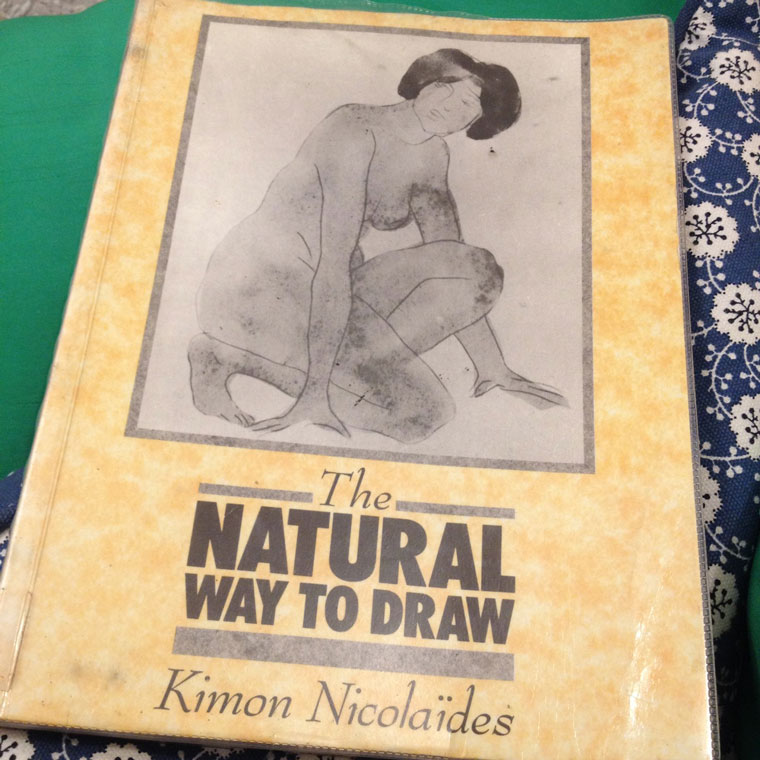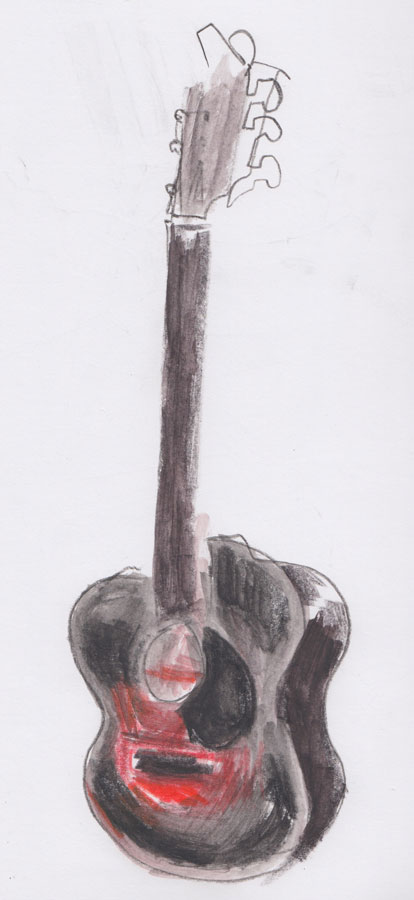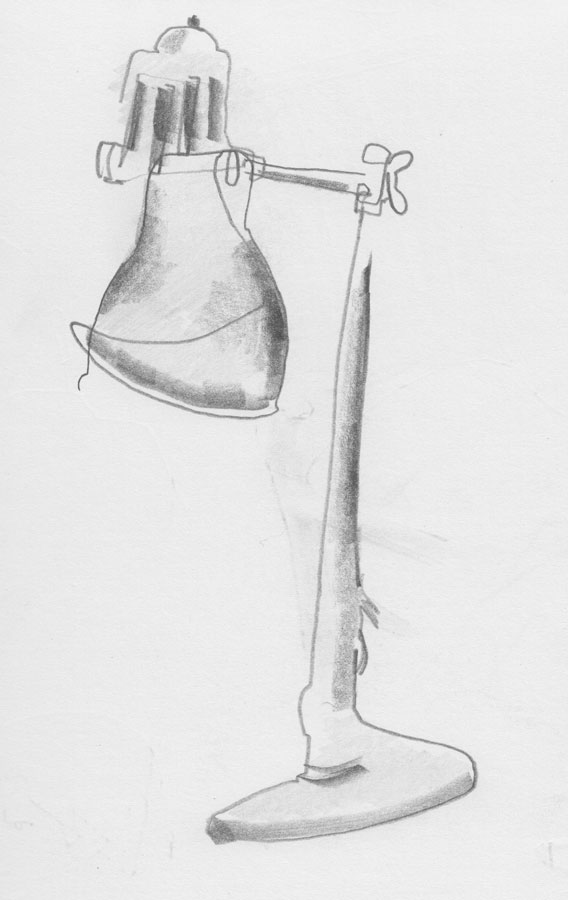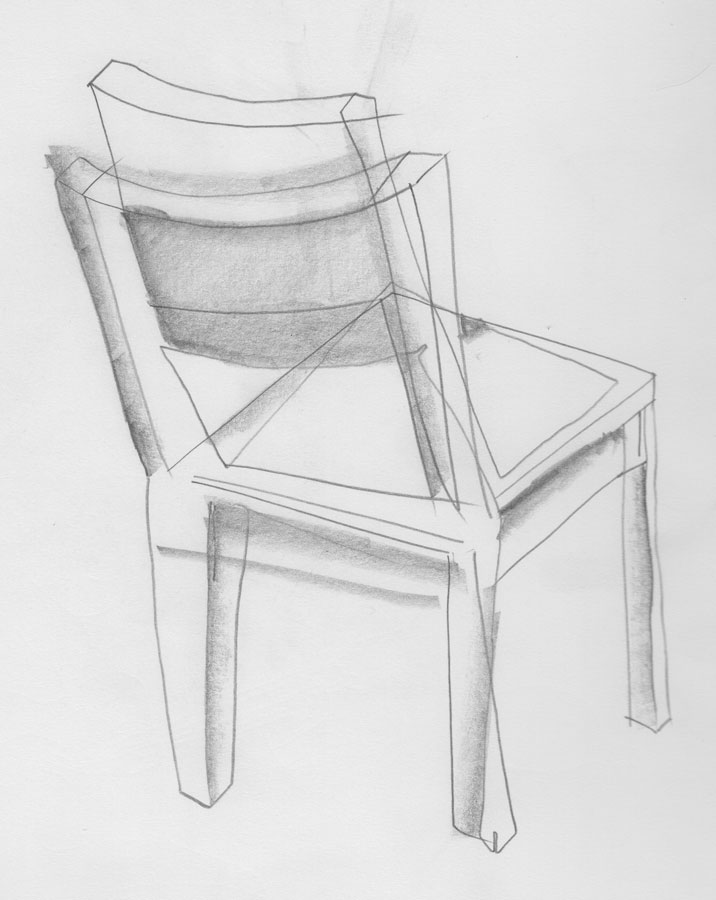the natural way to draw
I found this book in the library of Edinburgh College of Art last week. It’s called The Natural Way to Draw and was written by Kimon Nikolaïdes in the 1930s. Nikolaïdes died in 1938 and the book was only published after his death.
A lot of “how to draw” books show you how to build up an image. You start with the basic form and gradually build it up until it looks like the thing you’re drawing. This is fine, of course. The only problem I find with this method is that copying the work of experts can be fairly dispiriting. Your drawings usually end up looking a lot worse.
Nikolaïdes takes a different approach. His emphasis at the beginning of the book is on looking at the thing you’re drawing.
Here’s Exercise 1, “Contour drawing”:
Sit close to the model or object which you intend to draw and lean forward in your chair. Focus your eyes on some point – any point will do – along with the contour of the model. (The contour approximates what is usually spoken of as the outline or edge.) Place the point of your pencil on the paper. Imagine that your pencil point is touching the model instead of the paper. Without taking your eyes off the model, wait until you are convinced that the pencil is touching that point on the model upon which your eyes are fastened.
Then move you eye slowly along the contour of the model and move the pencil slowly along the paper. As you do this, keep the conviction that the pencil point is actually touching the contour. Be guided more by the sense of touch than by sight. THIS MEANS THAT YOU MUST DRAW WITHOUT LOOKING AT THE PAPER, continuously looking at the model.
Here are some drawings I did the other evening that started off as contour drawings. Later I added shading etc. I looked at the paper quite a lot, even though he wrote not to do that in capital letters.
The drawings are sort of crude, but they have a lot more life to them than my usual efforts. And it’s all thanks to Kimon Nikolaïdes teaching from beyond the grave,
Here’s a quote from the end of the book:
Let’s repeat what I said the very first time you sat down to draw. That is – drawing depends on seeing. Seeing depends on knowing. Knowing comes from a constant effort to encompass reality with all of your senses, all that is you. You are never to be concerned with appearances to an extent which prevents reality of content. It is necessary to rid yourself of the tyranny of the object as it appears. The quality of absoluteness, the note of authority, that the artist seeks depends upon a more complete understanding than the eyes alone can give. To what the eye can see the artist adds feeling and thought. He can, if he wishes, relate for us the adventures of his soul in the midst of life.
If your student efforts are based upon a sincere attempt to experience nature, you will know that you are on the right track and picture making will take care of itself. The job is to get at the truth – the truth as you will be able to understand it first hand, arrived at by the use of all your senses. When you are really enthralled, really stimulated, by a force other than the visual, strange looking things are apt to occur, but you will not judge your work by formula or conventional standards. You may feel that there is no real necessity for remaining visually truthful or even structurally truthful in relation to the moment. There is always a bigger truth undiscovered – unsaid – uncharted until you meet it.



